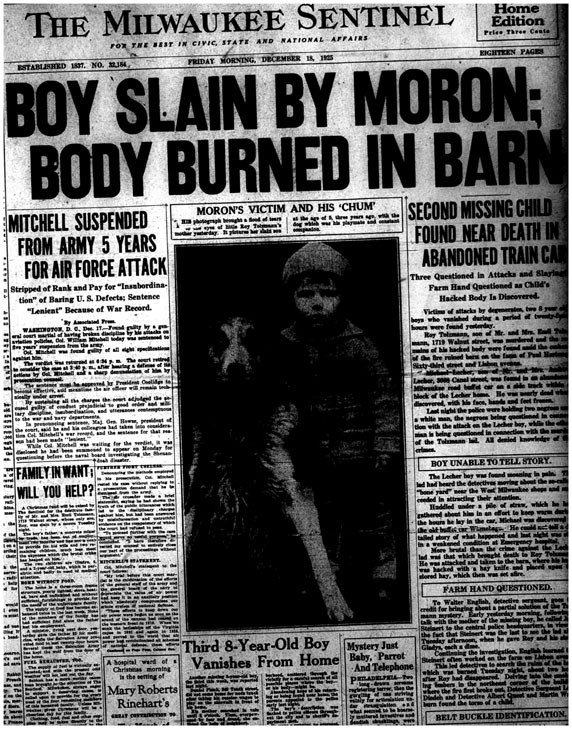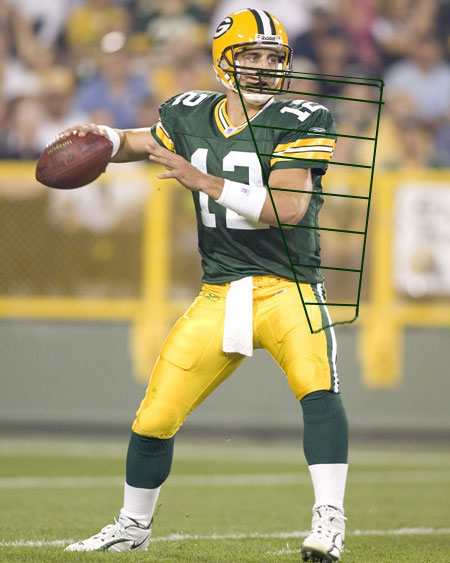Admit it. You do it. I do it. Everyone does. We all complain about our favorite team’s beat writer. Either they’re not giving us enough information, or they’re not being hard enough on the team, or they’re not praising the right players. We all know better than they do.
I decided to put this theory to the test. The folks at Sportsbubbler were kind enough to furnish me with a press pass for the Bucks-Nuggets game on Wednesday night at the Bradley Center, so I went undercover to see what being a major sports beat writer was all about. (This was fortuitous, since Denver happens to be my 4-year old son’s favorite team. He absolutely cannot believe an NBA team is named after chicken nuggets.)
The first thing I did in preparation for this test was to e-mail a friend of mine who’s a beat reporter for a major league baseball team. I told him that I had no clue what I was doing, and asked him for tips. He said I should definitely go to the morning shoot-around to get the feel for the place first.
So there I was, at 10:45 AM, wandering around an empty Bradley Center. As it turns out, shoot-around had ended ten minutes earlier, and all the coaches and players had gone back into the locker room. So it was just me and the ghost of Paul Mokeski in the whole building. It was completely empty – a spooky sight, given that in just a few hours, literally dozens of people would be in the stands watching the Bucks play.
Not wanting to waste the opportunity, I just started walking through the “House that Herb Built But Now Wants to Remodel,” gazing at the sights. In one of the hallways, there’s a giant poster of Brian Winters with the NBA’s “Where Amazing Happens” tagline. There’s 50 dollars in it for anyone who can get the team to change that poster to “Where Amazing Beards Happen.” Mostly, I just walked around the court, staring at the banners and retired numbers, with my mouth open. If someone saw me walking around by myself in there, I wanted to project an aura of wonderment, and not an aura of “I wonder where the best place to hide the explosives would be?”
Finally, I ran into the Bucks’ Director of Media Relations, Dan Smyczek. I explained what I was doing there, and he couldn’t have been nicer. He gave me a quick guided tour of the stadium’s underbelly. He said the Nuggets hadn’t shown yet, since teams that play the night before generally don’t have a shoot-around the next morning. (The Nuggets had barely beaten the Bulls in a nailbiter on Tuesday night.) He pointed out where the locker room was, where the media room was, and generally when and where interviews take place before and after the game. He said that it’s not so bad that I missed shoot-around, since it’s hard to really get any in-depth material there anyway. (So my story on “What Makes Luc Richard Mbah a Moute Cry Himself to Sleep?” will have to wait.)
He then sent me on my way, telling me to return at 5:00. On the way out, I passed a very weary-looking Joe Alexander, and walked out the door about the same time he did. For some reason, I couldn’t figure out how to get out of the bolted exit door, so I stood there, pulling on it for a good 30 seconds. I finally gave up and exited through the players’ parking lot, almost getting run over by Alexander. Admittedly, that would have made for a better column.
When I get back to the Bradley Center at 5, it’s bustling with activity behind the scenes. While the stands are still fairly empty, the tunnels under the seats are full of people with walkie talkies every 10 feet. Everyone seems to be in a hurry, scurrying to get to whatever it is they do.
I find press row down on the floor and meet up with a guy named Adam, who takes me into the Press Room. This is where all the media members can stuff their faces and shoot the breeze before game time. I spot Craig Coshun, Jon McGlockin, Tony Smith, and other “celebrities” in the room. (Although, admittedly, these guys are “celebrities” in much the same way that Levi Johnston is a “celebrity.”) This also happens to be the room where media members get their wireless internet password. I get mine and return to my seat.
(Important note: For the people reading this 30 years from now, Levi Johnston was a young man who has gained national prominence by vaguely insulting a major presidential candidate, then proving he should be taken seriously by allowing magazines to photograph his wiener.)
It comes time to conduct the pregame interviews with the head coaches. Apparently, the visiting coach is supposed to go first, but Denver’s George Karl is twenty minutes late. When he appears from the locker room, he backs up against a brick wall, giving his interview the look of a hostage video. Karl answers some fairly tepid questions. He thinks Carmelo Anthony needs to win more playoff games before he’s considered an elite player. He supports instant replay in some cases, but doesn’t think it should take so long. Many of his answers are drowned out by the stadium’s PA system, which appears to be playing some hip-hop version of a Bob Dylan song. Karl seems very comfortable with the Milwaukee media (as he coached in Milwaukee for five years), and he graciously stays until the very last media member is done asking questions.
By then, the small throng of reporters has moved down the hall to where Bucks coach Scott Skiles has begun giving interviews. Skiles has a reputation for being a Grade A red ass – cranky, irascible, and short with the media. On TV, you get the idea that he’d one day pull the spine out of a reporter if it were only legal.
But in person, Skiles was actually very calm and kind and answered questions as they came. Sure, he’s not going to win “America’s Funniest Comic” any time soon, but even when he got a question he didn’t like, he politely declined to answer. Still dressed in his black Bucks t-shirt and warmup pants, his demeanor and candor were impressive.
I worked my way back to my seat following the coach interviews. By the stickers on our seats, I saw I was seated between a writer for the Spanish Journal and the Sports Bubbler’s own Bucks guru, Paul Imig.
About ten minutes before the game started, I was sitting at my laptop at courtside, when I felt a tap on my shoulder. It was a man I didn’t know, who said he had a nephew that just graduated from the University of Missouri, and who was looking to get into sports journalism. He asked me, thinking I was a sports writer, what the best way to break into sports media was. I explained to him that I normally write about politics, and that I was just there for that one night covering the game. So I guess my only advice to his nephew would be, “write about politics.” (In actuality, his nephew better be willing to write a lot. For free.)
And it’s tip off time!
Before the game, the most appealing storyline dealt with how the Bucks’ young rookie point guard, Brandon Jennings, would fare against the Nuggets’ cagey veteran, Chauncey Billups. But for all the talk of Jennings vs. Billups, the real test early in the game was how well Jennings got the ball down low. Bucks center Andrew Bogut scored 11 of the team’s first 19 points, with Jennings assisting on 3 of them. It was clear from the outset that the plan was to pound the Nuggets underneath the hoop with the Bucks’ big guys. (Bogut and forward Hakim Warrick took 15 of the Bucks’ first 25 shots.)
And this is why I believe Scott Skiles is a good coach. From a fan’s perspective, it would seem that the Nuggets’ big guys, Kenyon Martin and Nene (a 6-foot-11 Brazilian who changed his name early in his career – it used to be “Dick Whitman,”) would be a tough matchup for Bogut. Anyone who watched the Nuggets’ blood war with the Lakers in the playoffs last year knows that Denver’s big bodies deliver plenty of bruises.
Yet Skiles clearly saw something that us fans didn’t. Maybe Bogut’s strengths played into specific weaknesses in Martin or Nene. Or maybe Skiles knows that big men have a harder time recovering from back to back games. (The Nuggets are finishing up the last game of a six game road trip.) But whatever it was, Skiles saw it, and I clearly didn’t. And that’s why he’s a coach and I’m sitting here scarfing down a hot dog.
On comes the ENERGEE dance team, dressed in Veterans’ Day outfits that have about as much fabric in them as one of my socks. Nothing says “thank you for your service and sorry about losing that arm” better than killer abs.
I am of several minds regarding the whole “dance team” phenomenon. First, I would love to meet the guy who first convinced women that they should dance half naked in front of big crowds at sporting events. And actually get them to enjoy doing so. It’s a crime that Milwaukee has a statue of the Fonz, but none commemorating the inventor of the sports bra, the first guy to put mayonnaise on a hamburger, or the inventor of cheerleaders. Let’s correct this.
On the other hand, I have to say that I’ve never actually been watching a game and said to myself “boy, I’m really not enjoying this competitive athletic match – what it really needs is some near-nude women!” (Although I have said that about going to the grocery store.)
Anyway, they’re right in front of us here in press row, and they have provided us all with an angle that I will not soon un-see. I’m pretty sure I can see what they had for lunch. Back to the game.
The game stays close early, with the first quarter ending tied at 27. I read Imig’s column online, where he quotes Brandon Jennings as saying Chauncey Billups is a Hall of Famer. In order to ensure Billups’ place in the hall, Jennings exercised his option to not defend him, and Billups drains two three pointers on him in the span of two minutes.
One of the first things that’s noticeable from up close in press row is how fast Brandon Jennings actually is. This gives me much consternation, as my wife has always told me I was the fastest man in Wisconsin.
Hey, wait…
And by the way, as long as we’re here, what is it with Wisconsin excellence and the name “Jennings?” Greg Jennings of the Packers makes the Pro Bowl. Brandon Jennings becomes an immediate rookie sensation. If I were the Brewers, I would make sure I drafted any high school player in America with the last name “Jennings,” just to ride the wave. Somewhere in Southeast Wisconsin, there’s a dentist named “Ernie Jennings” that gives fillings that make all your food taste like lobster. There’s a garbage man named “Buford Jennings” that cleans the whole block in half the time. You get the idea.
Being a beat writer is clearly much different now than it has been traditionally. In days of yore, fans had very limited access to information about their teams – in some cases, the only way you could see your team on television was if they were playing a national game on a major network. But now, with every game on television and a preponderance of websites, daily game recaps are almost superfluous. Who wants to read about something they already watched with their own eyes? And if they want to read about it, why don’t they just go to one of the blogs that likely has already broken down each player’s performance within 3 minutes of game’s end?
This is what makes the job so difficult – finding new and interesting ways to inform people about something they’ve already witnessed. And it’s why sports writers take such a beating. Gone are the days of Grantland Rice banging out erudite verbal masterpieces on a daily basis, composing orchestras of words to inform the public. Now, the deadlines are seconds, not hours. And everyone has an opinion – and if it doesn’t measure up to what the reader thinks, the reporter can expect to see their name disparaged on a blog somewhere. (Although some of them are jerks, so they deserve it.)
One of the first things that you notice sitting next to the Nuggets bench are all the tattoos they have. This has to be the most inked team in sports history. Chris “Birdman” Anderson has completely run out of skin on his body to tattoo – he might have to start renting space on other people’s arms. (As Steven Wright once joked, I’m looking into getting a full body tattoo of myself, only taller.)
And yes, it looks horrible – but I kind of appreciate it from a motivational perspective. It really is kind of like going “all in” in poker. Basically, he has to hustle his tail off in basketball now, because he is virtually unemployable in the real world. It’s not like his fallback job is working at H&R Block or something. He’s got to make a go of hoops. Anyway.
(Later in the game, Birdman throws a towel to a little kid sitting in the stands. As Imig remarked, it’s really easy to root for a guy who seems to appreciate the position he has.)
Following a blocking call on Ersan Ilyasova that would embarrass Tim Donaghy, the Bucks lead at the half 53-47. Near the end of the half, Jennings makes a long pull-back jumper that has the Nuggets bench glancing at each other with incredulity. Nuggets reserve forward Malik Allen, sitting three feet from us, looks over and says “If Jennings makes a shot, the next time the Bucks have the ball, he comes down and shoots it automatically.” This is called foreshadowing.
One of the most noticeable things in the Bradley Center tonight is the section of 100 tickets purchased by Andrew Bogut that he has dubbed “Squad6.” For each home game this year, Bogut has bought tickets and given them away to the most boisterous Bucks fans he could find. I decide that after the game, I will suggest to Bogut that he instead give away his 100 tickets per game to homeless people. How great would that be, to essentially have a soup kitchen in the middle of the arena? Plus, it would save the Bucks money, as they wouldn’t have to hire anyone to clean up the Bradley Center after games. You think there would be any curly fries, popcorn, or half-eaten hot dogs laying around after SquadHomeless exits the building? The Bucks are free to send me a check for all the money I save them. I have a million of \’em.
The second half begins, and it’s immediately a stark contrast to the first. Jennings appears to be rolling, hitting a layup and two jumpers. Things get testy under the Nuggets’ basket as Bogut and Carmelo Anthony get tied up, leading to a double technical foul. Yet it’s Jennings that’s the first one to go over and make peace with Anthony. In his sixth game in the league, he already appears to be a leader. He should probably go ahead and file the restraining order paperwork against me now.
After the third quarter, the ENERGEE dancers walk right next to me to go throw junk into the stands. I almost pass out from sucking in my gut for 3 straight minutes.
By the fourth quarter, the Bucks have built a lead as large as 12, but the Nuggets come roaring back to make it close. However, with just under four minutes left, with Denver appearing to have seized momentum, Jennings works his way off a screen and hits a big three pointer. I remember Malik Allen’s cursory scouting report on Jennings – and sure enough, the next time down the floor, he hits another backbreaking three pointer to crush the Nuggets. Even if you know it’s coming, you can’t stop it. The Nuggets keep fighting, but Bogut hits a floater in the lane and Jennings knocks down six consecutive free throws to seal the 108-102 win, moving the Bucks’ record to 4-2.
After all the excitement, it seems to dawn on the crowd what had just happened. They just saw a wispy point guard go for 32 points and nine assists in his sixth game in the NBA. And it’s not like those 32 points were an Allen Iverson-style 32 – Jennings shot 11 of 19 from the field. And he didn’t score them in a lopsided game – he scored them when his team needed them the most, against a team who had been 6-2 before tonight.
For so long, the Bucks have been marketing their past in order to get fans interested. They even changed their uniform colors back to the original red and green in order to reconnect with days of glory. (In a truly retro move, the team has decided women shouldn’t be allowed to vote for the NBA all star teams.) But now, with this one performance, Brandon Jennings has given Bucks fans a reason to look to the future. No longer do fans have to reminisce about the Junior Bridgeman era – there might actually be a reason to come see this new phenomenon.
And it was at this moment that I realized why I could never be a good sports beat writer. I simply can’t extricate myself from the game going on, in order to provide a balanced account of the game. I’m just too much of a fan. People seeing me on press row probably noticed the occasional fist pump or shout “yes!” Being a beat writer for one day is like being a gynecologist for a day – you haven’t had enough practice to be dispassionate about what you’re viewing.
After the game, I fought the crowd to go see if I could get in on a couple interviews. You almost have to pick one side or the other to cover, since the teams are fairly separate. I see a group of reporters by the Nuggets locker room, waiting for Karl to come out to talk. As I’m standing there, I see the same reporters I saw before the game, and… Greg Jennings? Green Bay Packer Greg Jennings holding a microphone? Here he is, standing three feet from me, ready to start interviewing George Karl? What in the hell is going on here? Did I hit my head on the way out?
As it turns out, it appears Jennings, a Bucks season ticket holder, has signed on to do post-game interviews with the Milwaukee Fox affiliate. For five minutes, I just stood there next to him, as he read the box score. I wanted so badly to have him sign something for my son, but I was there as a reporter, not for personal reasons. I thought I would be breaking reporter etiquette to ask for an autograph. Plus, I am chicken.
It appears Karl left the locker room through a different door, as he actually walks up behind the throng of reporters, startling them. He’s wearing the beleaguered look of a coach who has lost 645 professional games, and he moves slowly into place. Six-foot-eleven Nuggets broadcaster Scott Hastings offers to lend Karl his sport coat, to cover up the green golf shirt Karl has changed into. Karl demurs. Then the interviews go on. You can barely hear the coach’s voice, so everyone’s shoving their microphones as close to his face as possible. Behind the coach, Nene destroys some of the pizza left out for the players. The television lights seem like they’re roasting the top of Karl’s bald head. And he does this 82 times a season.
I expected the mood to be much better in the Bucks’ locker room, and it was. The room is bright, with high ceilings and wooden lockers – although it seems smaller than I expected. All the players are there, in various stages of undress, with many of them talking to reporters while completely naked. (Let’s just say if you wanted, you could see plenty of Mbah a Booty.)
Andrew Bogut stood in the right of the room, wearing nothing but a towel around his waist and two giant ice bags strapped to his knees. There was also an ice-filled yellow janitor’s bucket in front of his locker, presumably to soak his feet. He answered question after question, then eventually crept away to hit the showers.
On the other hand, Brandon Jennings was leaning up against a corner of the locker room, fully dressed. He seemed to be answering questions almost sheepishly, as if he were embarrassed about what he just accomplished. Up close, it’s easy to see that he just turned 20 years old. He talked with his chin down, hands fidgeting with things in his locker. When asked whether Billups gave him any pre-game advice, he chuckled and said no. “Just go slow for me, young fella,” is all Billups said to him before the game, according to Jennings.
By that time, ace reporter Greg Jennings had made his way into the locker room, and he was interviewing Charlie Bell. Both guys are from Michigan (although Bell is 4 years older), so it seemed like they knew each other. When the cameras stopped rolling, Bell asked Jennings if he was going out on the town – Jennings said no, since he had to get back to the wife. So it’s nice to see Jennings and I have more in common than our selections as alternates to the 2008 Pro Bowl.
My work having been done, I wandered out into the night air at about 10:00. By that time, the Nuggets were loading up onto the team bus, which was presumably taking them back to the hotel. Had I been a real reporter, I would have been back in the press room, furiously banging out my story. I’m just guessing that at some point, that story would have included Brandon Jennings. Perhaps in sonnet form, professing my eternal love for him.
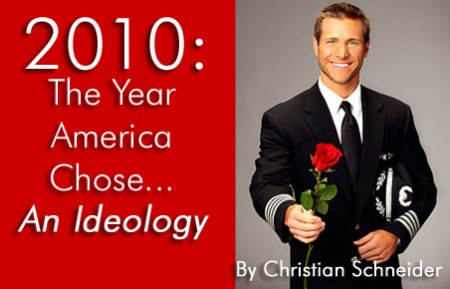 By 10:00 PM on the night of November 7, 2006, every drop of blood had run from my head. A sickly pallor had fallen over me. The look of shock on my face resembled one of the teenage boys in “Sixteen Candles” who had just gotten a first look at Molly Ringwald’s underwear.
By 10:00 PM on the night of November 7, 2006, every drop of blood had run from my head. A sickly pallor had fallen over me. The look of shock on my face resembled one of the teenage boys in “Sixteen Candles” who had just gotten a first look at Molly Ringwald’s underwear.


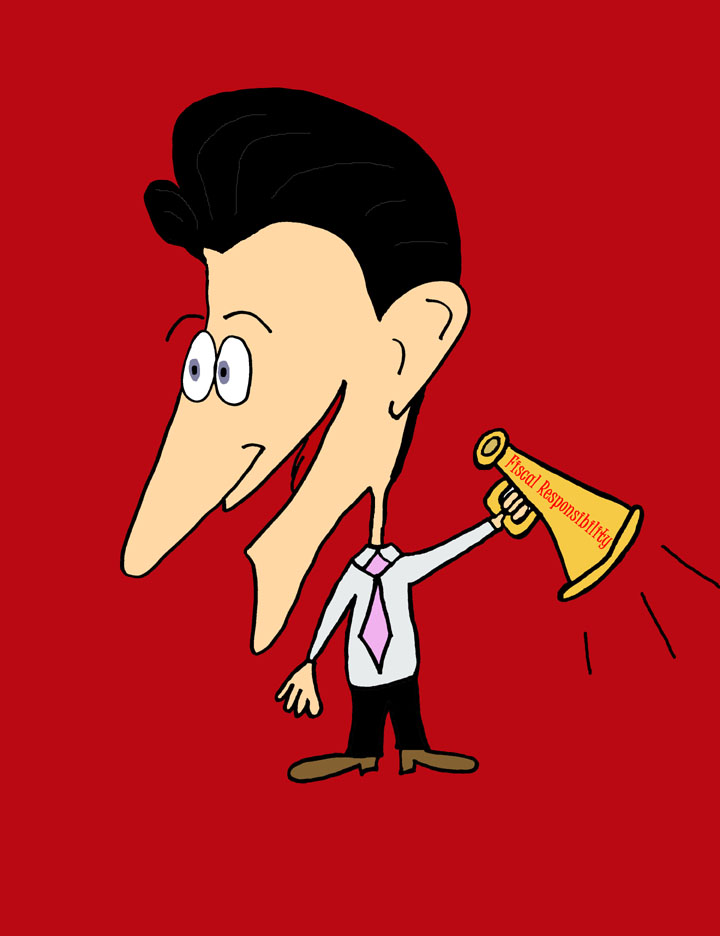
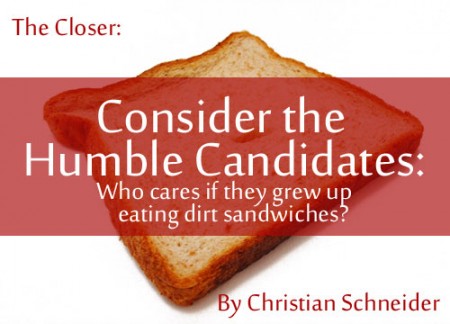
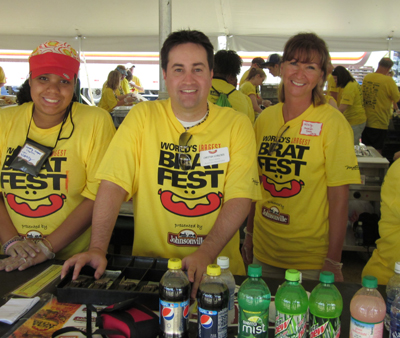
 1987 was a big year for the Cincinnati Reds’ athletic young star Eric Davis. The graceful, lithe outfielder was coming off a breakout season in which he hit 27 home runs and stole 80 bases. He was a combination of power and speed the league hadn’t seen in some time (and wouldn’t see for at least one more year, when a skinny rookie named Barry Bonds would make his debut.) In their 1987 season preview, Sports Illustrated called Davis “the Michael Jordan of baseball.”
1987 was a big year for the Cincinnati Reds’ athletic young star Eric Davis. The graceful, lithe outfielder was coming off a breakout season in which he hit 27 home runs and stole 80 bases. He was a combination of power and speed the league hadn’t seen in some time (and wouldn’t see for at least one more year, when a skinny rookie named Barry Bonds would make his debut.) In their 1987 season preview, Sports Illustrated called Davis “the Michael Jordan of baseball.”
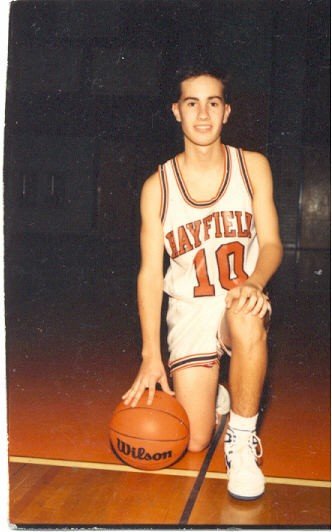 After playing ball my entire childhood, I was cut from my high school’s freshman team. I was so angry, I signed up to play on a church league team where I vowed to take it out on the other kids that weren’t good enough to make their freshman teams, either. My signature play was to bring the ball up and shoot it. When the other team caught on, I’d switch it up and let someone else bring the ball up and pass it to me. Then I’d shoot it.
After playing ball my entire childhood, I was cut from my high school’s freshman team. I was so angry, I signed up to play on a church league team where I vowed to take it out on the other kids that weren’t good enough to make their freshman teams, either. My signature play was to bring the ball up and shoot it. When the other team caught on, I’d switch it up and let someone else bring the ball up and pass it to me. Then I’d shoot it. It should also be noted that of the twelve teams in attendance, there were five white guys – total – at the camp. And three of them were on our team. Now, I was certainly no newcomer to the racial realities of basketball. My
It should also be noted that of the twelve teams in attendance, there were five white guys – total – at the camp. And three of them were on our team. Now, I was certainly no newcomer to the racial realities of basketball. My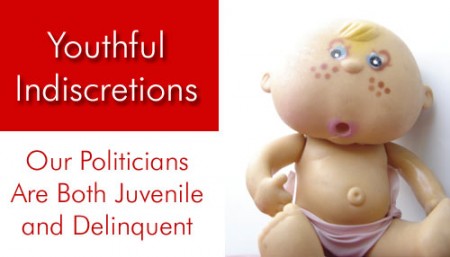
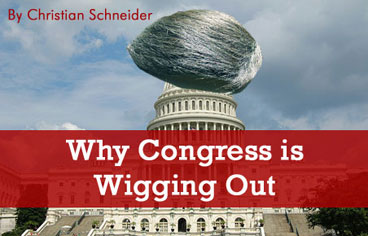
 In addition to the league being geographically smaller, the way the game was played was also very different than the game we know today. Teams had sixteen players, most of whom played both ways. There were no hash marks on the field, so the next play began wherever the last play ended – if the runner went out of bounds, the ball was placed adjacent to the out of bounds line, and the team usually had to waste a play just to move it back into the middle of the field.
In addition to the league being geographically smaller, the way the game was played was also very different than the game we know today. Teams had sixteen players, most of whom played both ways. There were no hash marks on the field, so the next play began wherever the last play ended – if the runner went out of bounds, the ball was placed adjacent to the out of bounds line, and the team usually had to waste a play just to move it back into the middle of the field.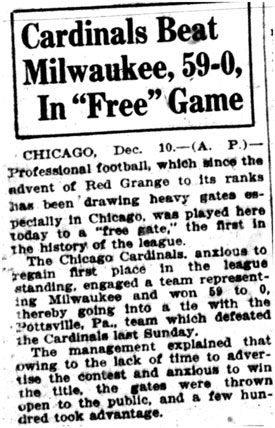
 In the meantime, their cousins to the north, the Green Bay Packers, flourished in a much smaller town. (In the 1925 season, the Badgers, coached by Johnny Bryan, went 0-2 against the Packers, losing by scores of 31-0 and 6-0.) The only touchdown the team scored all season was on a fumble recovery by left end Clem Neacy, against the Rock Island Independents.
In the meantime, their cousins to the north, the Green Bay Packers, flourished in a much smaller town. (In the 1925 season, the Badgers, coached by Johnny Bryan, went 0-2 against the Packers, losing by scores of 31-0 and 6-0.) The only touchdown the team scored all season was on a fumble recovery by left end Clem Neacy, against the Rock Island Independents.